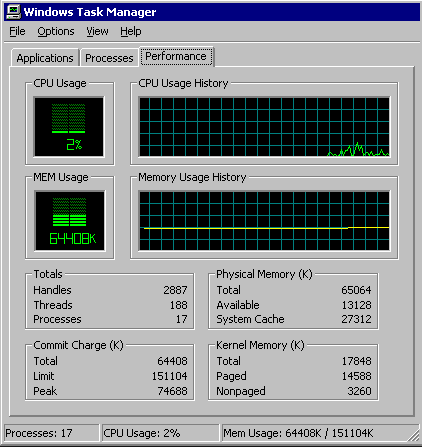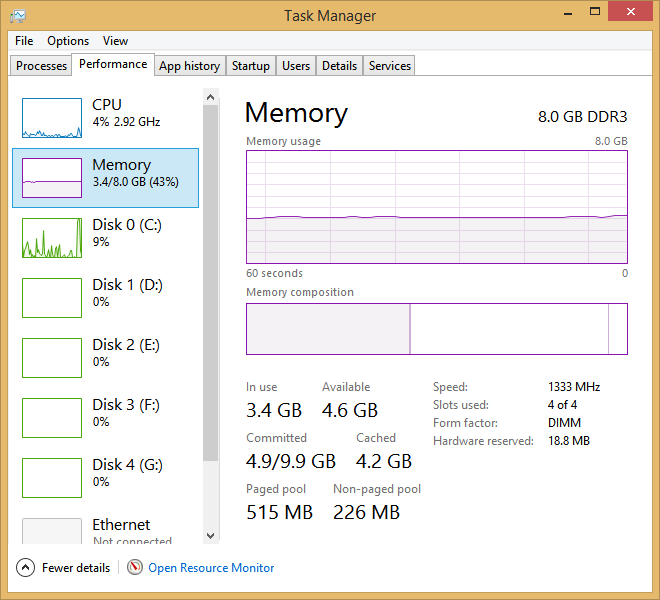| 我们致力本地化我们在尽可能多的语言的网站越好,然而这一页是机器使用谷歌翻译翻译。 | 关闭 |
-
-
产品
-
资源
-
支持
-
公司
-
在您的Windows PC的可用内存和可用内存Free Memory and Available Memory in your Windows PC
通过 Steve Horton 十月 21, 2013memory, ram, windows 8, Windows XP7 Comments计算机内存,通常称为RAM(随机存取存储器),是您机器中存储PC当前或最近使用过的文件和程序的一部分。当您的PC需要运行程序时,它会从硬盘驱动器加载它并将其临时存储在RAM中。在此计算机将一直运行,直到您的计算机完成程序运行,或者PC关闭。当您的电脑关闭时,存储在RAM中的所有内容都将丢失。

Windows XP中的内存使用情况简而言之,RAM是PC用于存储和运行活动程序和文件的工作空间。工作空间越大,它可以处理的程序越多,PC运行的速度就越快。但是,对于Windows XP及其以后的用户来说,这可能会有点混乱。对于这些用户,Windows将在您的内存使用情况统计信息下显示四类RAM:Free,Available,Cached和Total。
总记忆不言自明。这是Windows可以访问的物理内存总量。缓存内存是最近系统使用的RAM部分。你需要关注的两个是最容易混淆,可用和可用内存的两个。对于日常用户来说,这些类别看起来是相同的,但它们可以测量两种不同类型的内存。

Windows 8中的内存使用情况什么是免费记忆?
虽然可用内存和可用内存都有相似的声音名称,但可用内存正是它所说的。这是系统当前未使用的内存,根本不包含任何有用的数据。系统可以随时使用它。就那么简单。
什么是可用内存?
事情变得有点棘手。可用内存包含可供系统使用的所有内存。虽然这听起来与免费内存非常相似,但它实际上是一个更广泛的类别,包括空闲内存和缓存内存。这就是为什么你的免费和可用内存水平会有所不同,无论它们的名称和功能如何相似。
可用内存在Windows的更高版本中起着重要作用。从Windows 7开始,Windows开始将文件预加载到将来可能需要的可用内存中。这个想法是,如果其中一些文件已经存在于RAM中,您的机器速度会明显增加。如果这个内存无论如何都要空闲,为什么不使用呢?如果不需要这些文件,它们很容易从RAM中换出,以便为其他内容腾出空间。
Was this post helpful?YesNo
没有找到答案?问一个问题向我们的专家社区来自世界各地,并得到在任何时间在所有的答案。最相关的 最近的文章 把它钉在 Pinterest 上